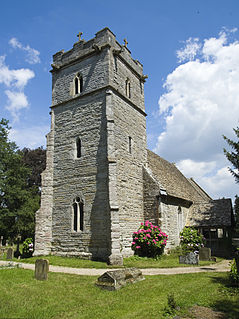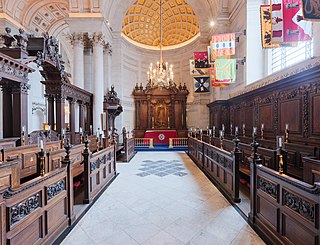| Dolenja Vas | |
|---|---|
| Coordinates: 45°42′24.34″N14°45′11.77″E / 45.7067611°N 14.7532694°E Coordinates: 45°42′24.34″N14°45′11.77″E / 45.7067611°N 14.7532694°E | |
| Country | |
| Traditional region | Lower Carniola |
| Statistical region | Southeast Slovenia |
| Municipality | Ribnica |
| Area | |
| • Total | 12.24 km2 (4.73 sq mi) |
| Elevation | 496.4 m (1,628.6 ft) |
| Population (2002) | |
| • Total | 794 |
| [1] | |
Dolenja Vas (pronounced [dɔˈleːnja ˈʋaːs] ; Slovene : Dolenja vas, German : Niederdorf [2] ) is a village in the Municipality of Ribnica in southern Slovenia. The area is part of the traditional region of Lower Carniola and is now included in the Southeast Slovenia Statistical Region. [3]

Slovene or Slovenian belongs to the group of South Slavic languages. It is spoken by approximately 2.5 million speakers worldwide, the majority of whom live in Slovenia. It is the first language of about 2.1 million Slovenian people and is one of the 24 official and working languages of the European Union.

German is a West Germanic language that is mainly spoken in Central Europe. It is the most widely spoken and official or co-official language in Germany, Austria, Switzerland, South Tyrol (Italy), the German-speaking Community of Belgium, and Liechtenstein. It is also one of the three official languages of Luxembourg and a co-official language in the Opole Voivodeship in Poland. The languages which are most similar to German are the other members of the West Germanic language branch: Afrikaans, Dutch, English, the Frisian languages, Low German/Low Saxon, Luxembourgish, and Yiddish. There are also strong similarities in vocabulary with Danish, Norwegian and Swedish, although those belong to the North Germanic group. German is the second most widely spoken Germanic language, after English.

A village is a clustered human settlement or community, larger than a hamlet but smaller than a town, with a population ranging from a few hundred to a few thousand. Though villages are often located in rural areas, the term urban village is also applied to certain urban neighborhoods. Villages are normally permanent, with fixed dwellings; however, transient villages can occur. Further, the dwellings of a village are fairly close to one another, not scattered broadly over the landscape, as a dispersed settlement.
The local parish church, built on a slight elevation in the western part of the settlement, is dedicated to Saint Roch (Slovene : sveti Rok) and belongs to the Roman Catholic Archdiocese of Ljubljana. It was built in 1818. [4] A chapel dedicated to Saint Margaret, outside the settlement to the east, is the converted surviving sanctuary of a larger 16th-century church, belonging to the same parish. [5]

A parish church in Christianity is the church which acts as the religious centre of a parish. In many parts of the world, especially in rural areas, the parish church may play a significant role in community activities, often allowing its premises to be used for non-religious community events. The church building reflects this status, and there is considerable variety in the size and style of parish churches. Many villages in Europe have churches that date back to the Middle Ages, but all periods of architecture are represented.

The Roman Catholic Metropolitan Archdiocese of Ljubljana is an ecclesiastical territory or diocese of the Roman Catholic Church in Slovenia.

The term chapel usually refers to a Christian place of prayer and worship that is attached to a larger, often nonreligious institution or that is considered an extension of a primary religious institution. It may be part of a larger structure or complex, such as a college, hospital, palace, prison, funeral home, church, synagogue or mosque, located on board a military or commercial ship, or it may be an entirely free-standing building, sometimes with its own grounds. Chapel has also referred to independent or nonconformist places of worship in Great Britain—outside the established church.





